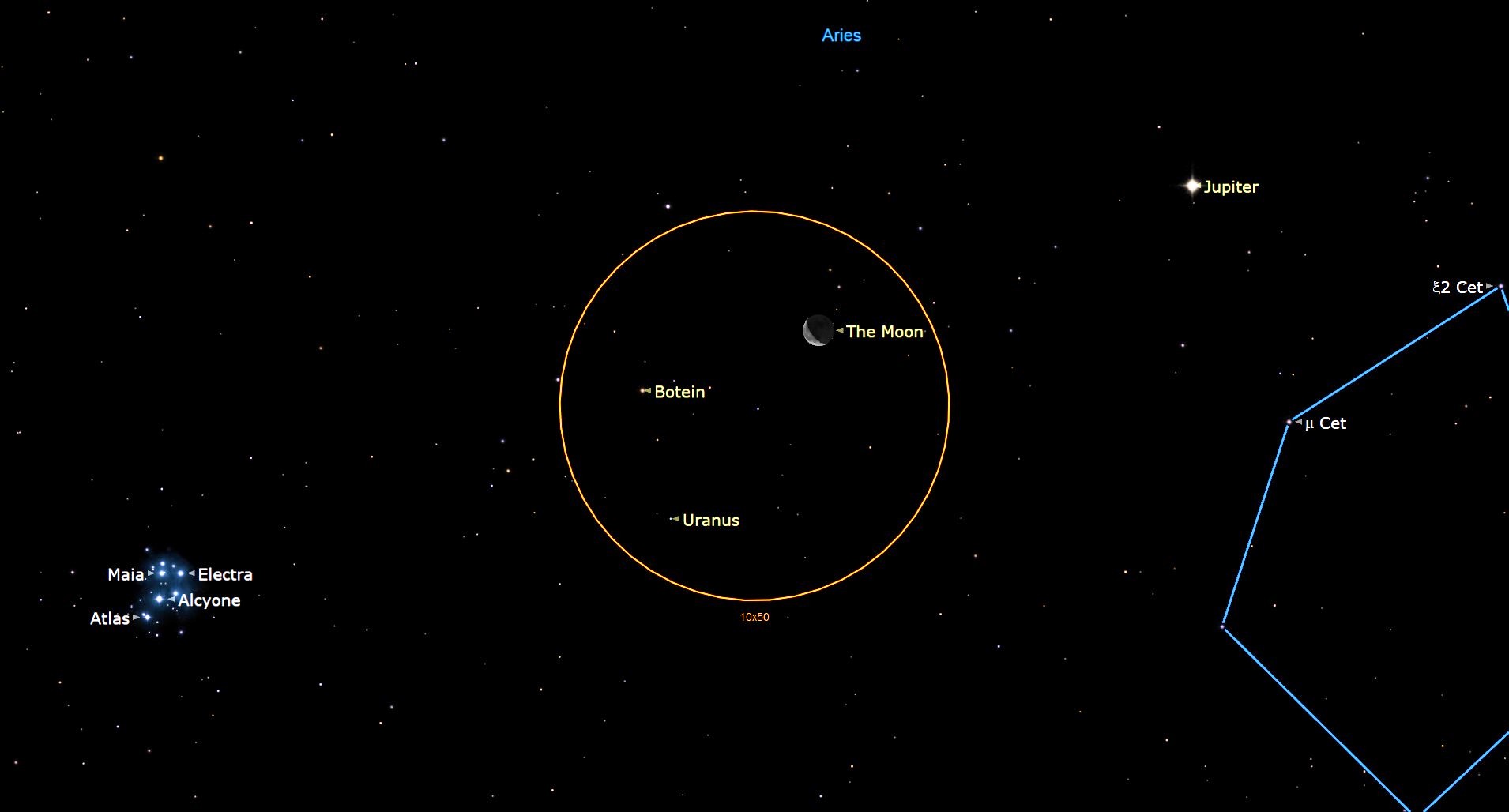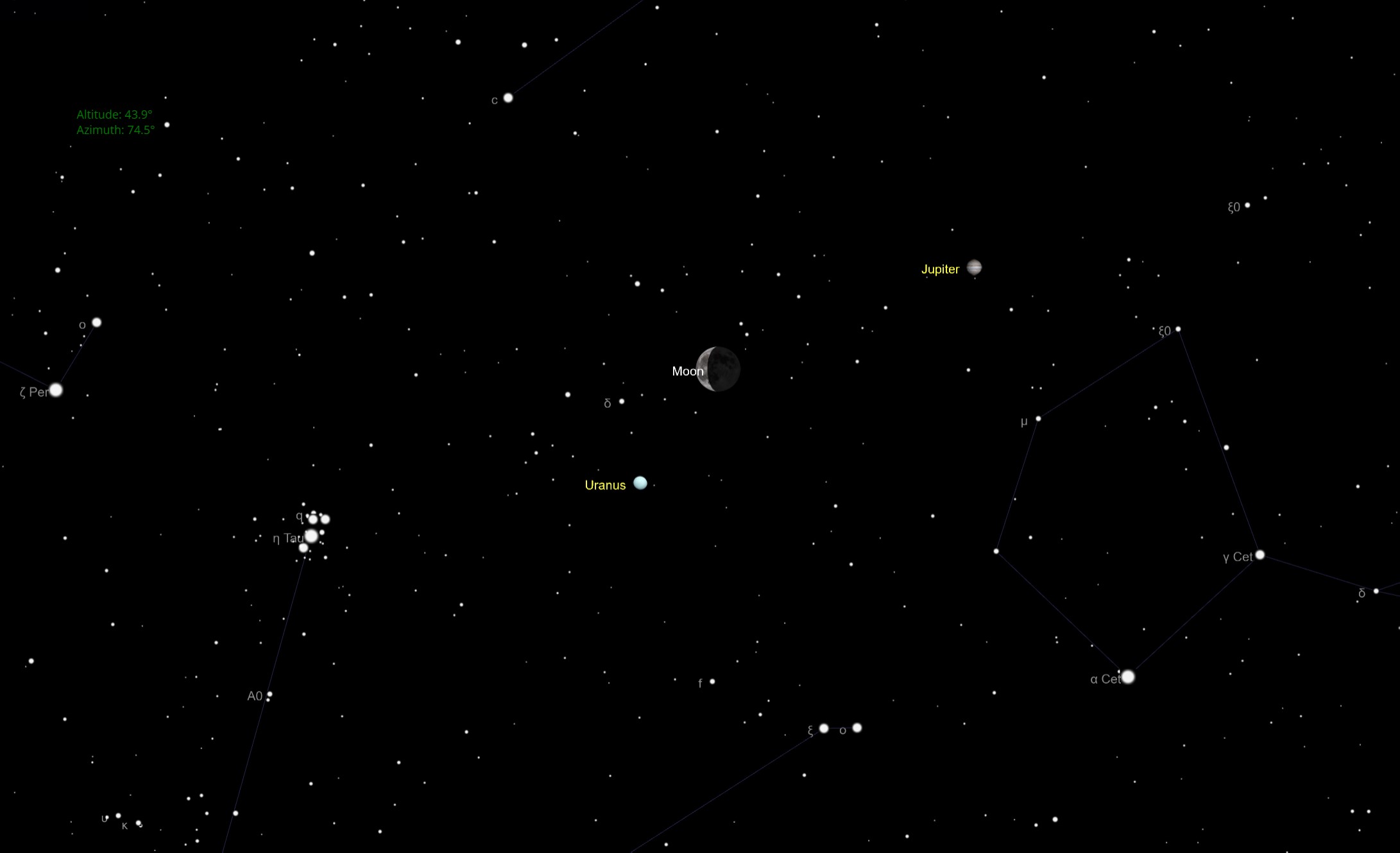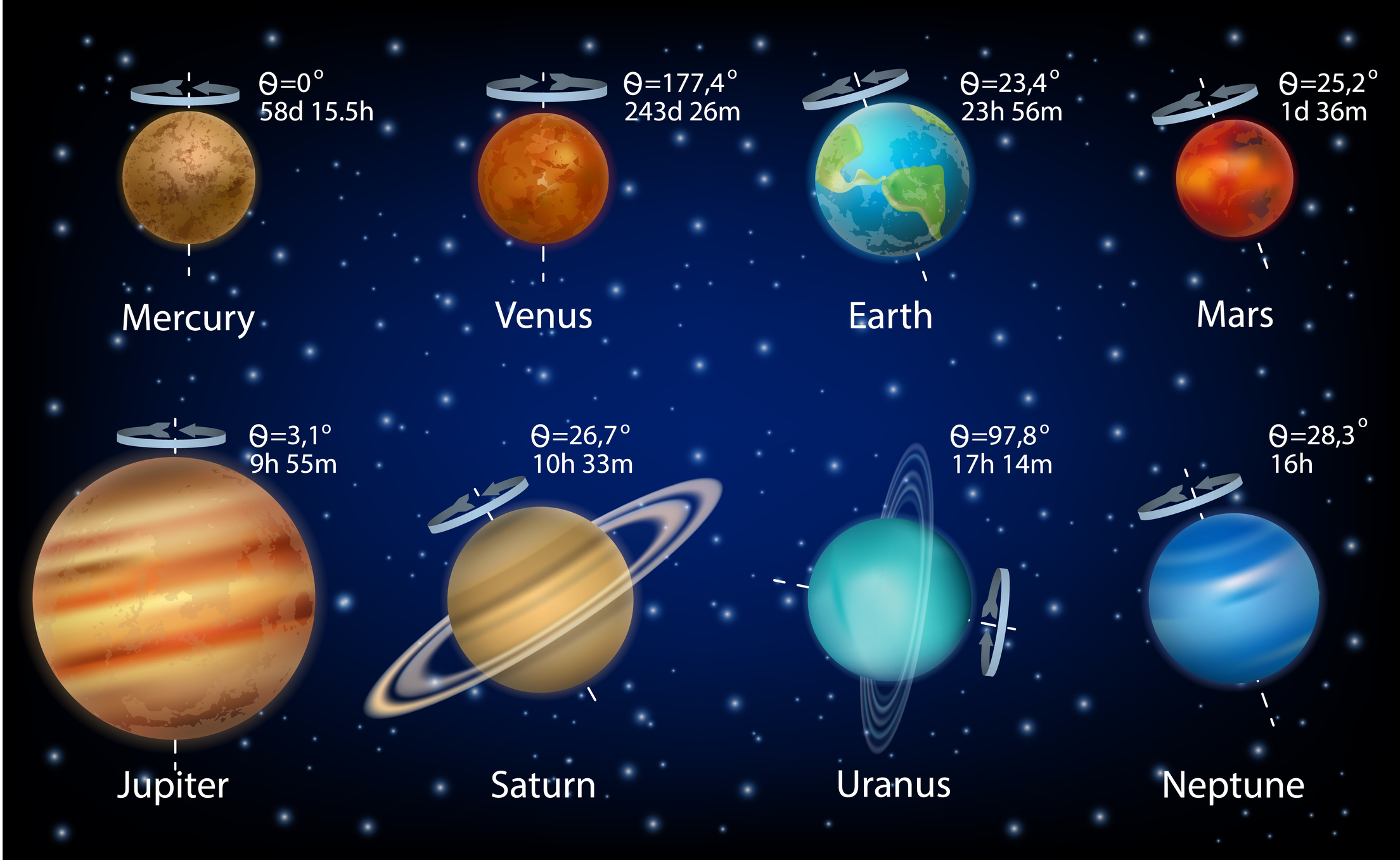The moon and Jupiter shine near Uranus tonight. Here's how to see them.
Watch the moon have a midweek date with not one but two solar system giants.

Wednesday morning is a busy one for the moon, which is scheduled to meet up with the giant planets Jupiter and Uranus.
In the early morning hours of July 12, the 23-day-old waning crescent moon will make a close approach to the largest world in our solar system, Jupiter, while also appearing just above Uranus, the second most distant planet. According to In the Sky from New York City, the arrangement will be visible from just after they rise at around 1:30 a.m. EDT (0530 GMT); it will likely take all three bodies an hour or two more to rise high enough in the early morning sky for them to be visible, depending on conditions in your viewing area.
Jupiter will be appear above and to the right of the moon during the close approach, while Uranus will be below and to the left. Farther to the left of Uranus will be the bright asterism and star cluster known as the Pleiades, or the Seven Sisters. Use this popular target as a guide to help you locate Uranus to the right of and slightly above it. Note, however, that Uranus is a fairly dim target and can be difficult to spot.
Related: Night sky, July 2023: What you can see tonight [maps]

Looking for a telescope to see the moon, Uranus, Jupiter or anything else in the night sky? We recommend the Celestron Astro Fi 102 as the top pick in our best beginner's telescope guide.
During the close approach, the moon and Jupiter will be separated by only around 2 degrees (the width of a few fingers at arm's length), and both celestial bodies will be in the constellation of Aries, the Ram. The moon will have a magnitude of -11.4, while Jupiter will have a magnitude of -2.3, with the minus prefixes indicating particularly bright objects over Earth. They will still be too widely separated to be seen together in the field of view of a telescope, but should be able to fit together nicely in the wider field of view of binoculars.
Uranus will be a great deal dimmer than the moon and Jupiter at a magnitude of just 5.8, but it could still be visible under dark skies with high-magnification binoculars or most telescopes. The two bodies will be separated by around 5 degrees, with the moon to the lower left of Uranus. The proximity of the moon to the ice giant in the sky will mean it acts as a good guide to spotting the distant planet. Under the right conditions, it should appear as a small, steadily glowing blue-green orb (as a general rule, stars twinkle, while planets do not).

A tale of two gas giants
Both Jupiter and Uranus are giant planets in the solar system, with the former classed as a gas giant and the latter classed as an ice giant.
Get the Space.com Newsletter
Breaking space news, the latest updates on rocket launches, skywatching events and more!
Jupiter, the fifth planet from the sun, is the largest planet in the solar system, with a diameter of around 87,000 miles (140,000 kilometers). Uranus is the seventh planet in the solar system and its third largest world (gas giant Saturn takes second place), with a diameter of around 32,000 miles (51,000 kilometers). That means it would take 11 Earths to loop Jupiter while, at its widest point, Uranus would be encircled by just 4 Earths.
Jupiter also dominates the other solar system planets in terms of mass. The gas giant has a mass equivalent to around 318 Earths, while Uranus has a mass equal to approximately 15 Earths.
There is one category in which Jupiter can't compete with Uranus, and that is frigidity. Jupiter is made of mostly hydrogen and helium gas with a temperature of minus 234 degrees Fahrenheit (minus 145 degrees Celsius). Meanwhile, Uranus is composed of an icy slush of water, methane and ammonia over a rocky core and has a temperature of around minus 320 degrees Fahrenheit (minus 195 degrees Celsius), making it the coldest planet in the solar system.
Uranus isn't just so cold because of its distance from the sun; after all, fellow ice giant Neptune is further from the star and still doesn't reach temperatures as low as those found on Uranus. Scientists believe that the ice giant is actually so frigid because impacts with large solar system bodies in its early existence caused heat to escape from its core.
While Jupiter's core is believed to have a searing temperature of 45,000 degrees Fahrenheit (25,000 degrees Celsius), Uranus' core temperature is thought to be barely 8,500 degrees Fahrenheit (4,700 degrees Celsius).
These impacts also left the ice giant with a strange axial tilt of 98 degrees, making it almost parallel to the plane of the solar system, compared to Earth's tilt of 23 degrees and Jupiter's axial tilt of just 3 degrees. This strange tilt means instead of circling the sun like a spinning top as the other planets do, Uranus rolls around the sun a bit like a celestial bowling ball.

If you are hoping to catch a look at the meeting between the moon and these two solar system giants, our guides to the best telescopes and best binoculars are a great place to start.
And you're looking to snap photos of the moon and the night sky in general, check out our guides on how to photograph the moon and how to photograph the planets, as well as our guides on the best cameras for astrophotography and best lenses for astrophotography.
Editor's Note: If you snap an image of the moon with Jupiter or Uranus, and would like to share it with Space.com's readers, send your photo(s), comments, and your name and location to spacephotos@space.com.
Join our Space Forums to keep talking space on the latest missions, night sky and more! And if you have a news tip, correction or comment, let us know at: community@space.com.

Robert Lea is a science journalist in the U.K. whose articles have been published in Physics World, New Scientist, Astronomy Magazine, All About Space, Newsweek and ZME Science. He also writes about science communication for Elsevier and the European Journal of Physics. Rob holds a bachelor of science degree in physics and astronomy from the U.K.’s Open University. Follow him on Twitter @sciencef1rst.
-
rod I did get out early this morning and view Jupiter, Moon, and Saturn using my telescope. There was a skunk somewhere nearby earlier too :) The fields and pastures lit up by the moonlight, lovely sight.Reply
Observed 0345-0515 EDT. Sunrise near 0551 EDT. Last Quarter Moon 10-July-2023 0148 UT so waning crescent this morning. I enjoyed views of Jupiter, Io shadow transit, views of various craters along terminator line of the Moon, Saturn, Titan, and Rhea moons visible at 71x. I used #58 green filter for Jupiter and the Io shadow transit as well as lunar observations. Io shadow transit began 0832/0835 UT, a tiny spot visible especially about 10 minutes later and near 0500 EDT. The #58 green filter enhances cloud bands on Jupiter and shadow transits of the Galilean moons as well as Great Red Spot transits. Saturn ring system is much more narrow view now compared to wider angle sights I enjoyed in the past. Some hint of cloud banding noticeable at Saturn. Copernicus crater on the Moon and many others in southern region along the terminator line quite distinct at 71x. I used my 90-mm refractor telescope with TeleVue 14-mm Delos eyepiece. Weather clear skies, temperature 18C with NW winds 4 knots. 3 satellites passed near Saturn position. One moving east, the others moving south. All were about 2nd or 3rd magnitude. Jupiter and the Moon in Aries, Saturn in Aquarius. The Moon and Jupiter about 6-degrees apart near 0400 EDT. -
David Moore(Ireland) Reply
What telescope were you using Rod?Admin said:On Wednesday (July 12), the waning crescent moon will have a busy morning, first meeting up with the gas giant Jupiter before getting the cold shoulder from ice giant Uranus.
The moon and Jupiter shine near Uranus tonight. Here's how to see them. : Read more -
rod Reply
I used my trusty Vixen 90-mm refractor telescope, purchased in Oct-91. It is mounted on a Vixen Porta II altazimuth mount using a Telrad. I use an Orion XT10-i too.David Moore(Ireland) said:What telescope were you using Rod? -
TruthB Told Reply
I'm confused. Is it my or your's in regards to rectal orifice? 😂Admin said:On Wednesday (July 12), the waning crescent moon will have a busy morning, first meeting up with the gas giant Jupiter before getting the cold shoulder from ice giant Uranus.
The moon and Jupiter shine near Uranus tonight. Here's how to see them. : Read more









